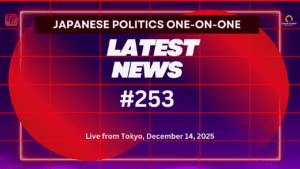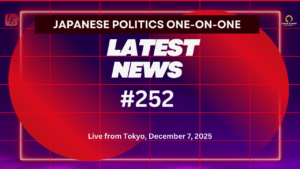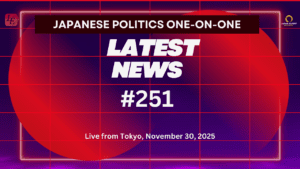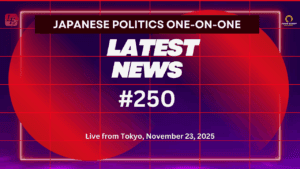Japan Pursues a Military Industrial Policy but must Balance Autonomy, Alliances, and Pacifist Norms
Context and Recent Policy Shifts started under Kishida (now in full bloom under Ishiba)
By Timothy Langley
Representative Director of Langley Esquire, k.k., a public-policy firm in downtown Tokyo
Executive Summary
Japan is undergoing a quiet revolution in defense policy—not through constitutional revision, but through industrial policy. Under Prime Ministers Kishida and now Ishiba, Tokyo is aggressively expanding its domestic arms industry, loosening postwar export bans, and redefining defense as an engine of economic security. These shifts are driven by China’s military assertiveness, U.S. pressure for alliance burden-sharing, and a growing awareness of supply chain vulnerability. Yet Japan must still navigate the legal and political limits imposed by Article 9 and a pacifist public wary of militarism. The result is a delicate balancing act: building defense autonomy without abandoning the doctrine of “proactive pacifism” that has defined the postwar era. Whether this balance holds will shape Japan’s role in Asia’s emerging security architecture—and the future of its industrial base.
Boosting Defense Production & Spending:
Under former Prime Minister Fumio Kishida, Japan launched an unprecedented defense build-up. Tokyo committed to doubling defense spending to 2% of GDP by 2027 (breaking its traditional 1%-of-GDP cap) (english.kyodonews.net). The 2022 National Security Strategy (NSS) explicitly called for strengthening Japan’s defense production and technological base, describing these as “defense capabilities themselves” (english.kyodonews.net). This reflects a policy consensus that a robust domestic defense industry is essential for Japan’s security. More recently in June 2023, the Diet passed the Act on Enhancing Defense Production and Technology Bases to revitalize the ailing defense sector (centurionpartnersgroup.com).
This new law created mechanisms to inject capital into arms manufacturers and their suppliers, encouraging them to expand domestic production (e.g. shifting key components from foreign imports to local manufacturing) (centurionpartnersgroup.com). The Ministry of Defense can now directly support subcontractors to improve supply chain resilience and even offer inflation-adjusted contracts and better profit margins, addressing long-standing issues that drove companies out of the defense business (centurionpartnersgroup.com).
These steps, continued under Prime Minister Shigeru Ishiba, aim to ensure Japan can produce advanced missiles, ships, and other equipment at home, reducing overreliance on foreign suppliers and possibly develop an export market. Notably, Japan’s latest budgets fund stand-off strike weapons (like U.S.-made Tomahawk missiles and an extended-range Type-12 missile by Mitsubishi) to establish a domestic “counterstrike” capability (rusi.org).
Easing Arms Export Restrictions:
Japan is also loosening its post-WWII restrictions on arms exports, a dramatic policy shift. In late 2023, Kishida’s Cabinet revised the 2014 “Three Principles” on defense transfers to allow certain lethal weapon exports. For example, in December 2023, Japan approved exporting Patriot PAC-2 missile interceptors (produced under U.S. license in Japan) back to the United States, helping replace U.S. stocks sent to Ukraine (voanews.com). And in March 2024, the government further eased rules to permit the global export of next-generation fighter jets that Japan is co-developing with Britain and Italy (english.kyodonews.net). Under the new guidelines, Japan can sell this jointly produced fighter to third-party nations (limited to those with defense cooperation pacts and not in active conflict) (english.kyodonews.net). Prime Minister Kishida argued that being able to export the co-developed jet is “necessary” to make the project cost-effective and keep Japan a credible equal partner (english.kyodonews.net).
These changes build on the 2014 arms export relaxation but go quite a bit further: for the first time Japan will be able to export lethal hardware it develops, albeit on a case-by-case basis with strict Cabinet approvals and end-use conditions (voanews.com, english.kyodonews.net). The policy shifts were calibrated to assuage domestic sensitivities – for instance, Komeito (the junior ruling party) only agreed after assurances that weapons would not be sent into active warzones (english.kyodonews.net). Still, this marks a clear step away from Japan’s decades-long near-ban on arms exports, signaling an intent to “actively promote” defense equipment sales as part of its security strategy (rusi.org).
Defense Autonomy in Economic Strategy:
The Kishida administration also reframed defense production as part of Japan’s broader economic security policy. The NSS and related strategies emphasize that a resilient defense industry underpins national security and economic vitality (english.kyodonews.net). In late 2024, the government (now led by Ishiba) began drafting a comprehensive National Defense Industry Strategy involving the defense and economy ministries (english.kyodonews.net). This upcoming strategy (expected in 2025) will set medium-to-long-term goals for defense manufacturing, foster public–private–academic collaboration in critical technologies, and identify which industrial capabilities Japan must maintain domestically ((english.kyodonews.net). The focus is not only on traditional armaments but also emerging dual-use fields like AI, space, and cyber… areas where economic and military security intersect.
For example, Japan and the United States have launched a new forum (DICAS – Defense Industrial Cooperation, Acquisition and Sustainment) to co-develop military hardware (like missiles and drones) and secure supply chains for critical components (breakingdefense.com). Likewise, Prime Minister Ishiba has sought defense-tech partnerships with Europe: in April 2025 he and NATO’s Secretary-General agreed to deepen industrial cooperation on cutting-edge dual-use technologies (AI, quantum, unmanned systems) in light of lessons from the Ukraine war and China’s drive to control strategic supply chains (english.kyodonews.net). In short, bolstering defense autonomy is now viewed as integral to Japan’s economic security and its ability to withstand coercion.
Strategic Drivers Behind the Shift
China’s Assertiveness
A primary motivation for Japan’s defense policy evolution is the growing threat environment in East Asia. Chinese military spending and activities have expanded significantly – from routine incursions by Chinese ships around the Japanese-administered Senkaku Islands, to PLA drills around Taiwan and in the South China Sea. Beijing’s rapid buildup of naval and missile forces has raised alarm in Tokyo (english.kyodonews.net).
Japan’s 2022 NSS explicitly identified China as an “unprecedented strategic challenge” and North Korea’s missile tests (including missiles flying over Japan) as immediate dangers. In response, Japan is enhancing its deterrence capabilities: acquiring long-range strike options and modernizing its Self-Defense Forces (SDF) to counterbalance China’s military might. The defense industrial push enables Japan to field advanced systems (like the joint fighter and improved missiles) that deter adversaries by raising the costs of aggression. It also allows Japan to support and arm regional partners – for instance, Japan’s export of air defense radars to the Philippines is aimed at strengthening Southeast Asian countries facing Chinese pressure (rusi.org). In essence, Tokyo seeks to reinforce a rules-based order in Asia by beefing up its own defense and helping like-minded nations bolster theirs. This outward-looking strategy marks a notable shift from Japan’s past inward-focused defense posture. This is significant.
Alliance Expectations and Partnerships:
Japan’s moves also answer long-standing U.S. calls for it to shoulder a larger security role. Under the U.S.-Japan alliance, the American military has guaranteed Japan’s defense for decades, but Washington has encouraged Japan to “do more” as regional threats rise (english.kyodonews.net). Kishida’s decision to ramp up defense spending was warmly welcomed by the U.S., and Japan’s new capabilities (such as counterstrike missiles) dovetail with allied operational plans. Closer industrial cooperation with the U.S. – for example, co-producing missiles and jointly maintaining equipment – not only improves interoperability but also reduces Japan’s dependence on sole-sourcing from the U.S. (breakingdefense.com, rusi.org).
The alliance framework has expanded:
Japan’s 2023 acquisition of Tomahawk cruise missiles and the joint development of the next-gen fighter with the UK and Italy (the GCAP program) illustrate how allied demands and co-development opportunities are driving Japan’s defense industrial growth(voanews.com). Moreover, Japan is cultivating new security partnerships beyond the U.S. PM Ishiba, in particular, advocates a more multilateral approach – he has even floated the concept of an “Asian NATO”-like collective defense network and visited partners like Australia, India, and various European countries to deepen ties (ifri.org).
While an Asian NATO remains hypothetical, Japan’s increasing collaboration with NATO (e.g. offering support for Ukraine and joint technology projects) shows its intent to be a proactive ally internationally (english.kyodonews.net). Expanding arms exports can also strengthen alliances: by supplying equipment to friendly nations, Japan can reinforce strategic relationships and share the burden of regional security. These efforts align with U.S. and partner expectations that Japan become a more self-reliant and capable ally, contributing to collective deterrence against common threats.
Reducing Dependency & Economic Security:
Another driver is Japan’s recognition that over-reliance on foreign (especially U.S.) defense suppliers could be a vulnerability. The COVID-19 pandemic and Russia’s invasion of Ukraine exposed global supply chain fragilities, prompting Tokyo to ensure it can sustain itself in a crisis. The war in Ukraine underscored the importance of robust domestic arms production and ammunition stockpiles(english.kyodonews.net). If a conflict erupted in Asia, Japan might face supply bottlenecks or diversion of U.S. resources elsewhere. Thus, many see building-up domestic manufacturing of missiles, ships, and critical components as vital to national resilience.
The new industrial policies directly incentivize replacing imports with local products (centurionpartnersgroup.com), and government support is aimed at keeping smaller subcontractors in business to prevent critical supply gaps. For example, Japan is investing in domestic propulsion, sensor, and aerospace technologies to avoid being caught short if overseas suppliers cannot deliver. In tandem, this push is tied to Japan’s economic growth strategy: defense is being reframed as a high-tech sector that can drive innovation (in AI, space, cyber) and create skilled jobs.
By easing export rules, Japan hopes its defense firms can achieve economies of scale and become globally competitive, rather than relying on a single (budget-constrained) customer at home (rusi.org). This reduces the unit cost of equipment for the SDF and makes the industry more sustainable long-term. In sum, enhancing defense industrial autonomy is both a security necessity and an economic opportunity, ensuring Japan is not overly beholden to foreign suppliers or technologies for its national defense.
Reconciling Changes with Pacifist Norms and Article 9
Pacifist Constitution vs. New Defense Posture:
Japan’s post-war pacifism, enshrined in Article 9 of the Constitution, casts a long shadow over these policy shifts. Article 9 famously renounces war and forbids maintaining “war potential,” which for decades was interpreted as a ban on offensive forces and arms exports. Every expansion of Japan’s defense role has therefore been carefully justified as defensive in nature.
The recent moves are no exception. Officials insist that bolstering armaments and exporting equipment do not violate Japan’s “basic philosophy of a pacifist nation”, as long as they are done with strict controls and for self-defense purposes (english.kyodonews.net). For example, the acquisition of counterstrike missiles is presented as an extension of Japan’s right to self-defense—necessary to intercept and deter enemy attacks (such as missile launches from North Korea or China) before they can land on Japanese soil. Nonetheless, critics argue that capabilities like long-range missiles “defy the principles of Article 9,”blurring the line between defense and offense (rusi.org).
Similarly, the prospect of Japanese-made weapons being sent abroad (Australia, Indonesia, Philippines, etc.) raises ethical and legal questions in a country where many still subscribe to pacifist ideals. Government leaders have tried to square this circle by emphasizing transparency and restraint – for instance, stating that any arms exports will exclude countries at war and will contribute to international peace and stability (english.kyodonews.net).
Article 9 Revision Debates:
The push to expand Japan’s defense toolkit has reinvigorated domestic debate about formally revising Article 9. Both Kishida and Ishiba, from the conservative Liberal Democratic Party (LDP), have expressed support for constitutional revision to explicitly recognize the Self-Defense Forces. In late 2024, as Kishida prepared to step down, the ruling LDP even drafted proposals to amend Article 9 by adding a clause naming the SDF (while retaining the renunciation of war) (benglish.kyodonews.net). Ishiba, a longtime defense hawk and now Prime Minister, has argued for more sweeping changes. He has suggested that parts of Article 9’s wording be deleted or rewritten to enable a “normalized” defense posture (english.kyodonews.net). He views full normalization, including constitutional change, as ultimately necessary to eliminate ambiguity over Japan’s military role (ifri.org). Most in the LDP have committed to this result.
However, the politics of Article 9 remain fraught. Constitutional revision requires a two-thirds Diet majority and a national referendum, a hurdle that has proven insurmountable to date (english.kyodonews.net). After the general election in October 2024, pro-revision forces actually lost ground – the LDP-Komeito coalition fell below a Lower House majority, and even a partnership with like-minded opposition parties would not reach the two-thirds threshold (asahi.com).
With Ishiba’s Cabinet popularity dipping and his focus shifted to economic issues and coalition management, the drive to amend Article 9 has once again stalled (asahi.com). Instead, changes are progressing via reinterpretation and policy tweaks under the existing constitution. (Notably, back in 2014 the Abe government reinterpreted Article 9 to allow collective self-defense, laying the legal groundwork that now lets Japan cooperate more freely with U.S. and partner forces overseas.) Today’s leaders continue to navigate a careful path: expanding Japan’s defense capacities without crossing the public’s red lines on pacifism. Opinion polls show a gradual rise in support for a stronger defense amid security threats, but the populace remains cautious about abandoning the strictly defensive posture that has kept Japan out of war for 78 years (rusi.org).
Managing Regional Reactions:
Japan’s neighbors are closely watching its evolving defense stance. Memories of Japan’s past militarism run deep in East Asia, so policy shifts that Tokyo sees as prudent (like increasing arms exports or joint fighter development) can raise suspicions in Beijing and Seoul. China’s government, for instance, reacted to Japan’s fighter export announcement with “grave concern,” urging Tokyo to “reflect on its history of aggression” and warning against actions that could foment regional tensions (english.kyodonews.net). Japan is attempting to allay such fears by stressing the defensive and transparent nature of its policies, and by deepening security dialogue with its neighbors.
Still, the balancing act is delicate: Japan must reassure domestic and international audiences that it remains committed to peace, even as it strengthens its military muscle. Moving forward, much will depend on how Japan implements its new policies – gradually building a credible defense-industrial base and export program, while upholding the self-imposed restraints (strict export screening, exclusive defense-oriented use of capabilities, etc.) that differentiate it from more offense-driven military powers.
Outlook for Japan’s Defense Autonomy
Japan’s military/industrial policy is actually a defense/industrial policy at this point, and in the midst of a historic transformation. In the face of aggressive regional challengers and global instability, Tokyo is shedding some of its post-war inhibitions to become a more autonomous and active security player. The Kishida and Ishiba administrations have laid out a roadmap that integrates defense with economic security, strengthens alliance ties, and cautiously stretches the limits of Japan’s pacifist constitution. If fully realized, these changes will give Japan greater capacity to defend itself and contribute to regional stability – from deterring threats in Northeast Asia to providing military aid to partners. However, progress will likely be incremental.
Political consensus in Japan still favors a defense posture that is strictly for self-defense and within the bounds of Article 9’s spirit. Thus, the government will proceed carefully, pairing any new military capabilities or exports with assurances of responsible use and continued commitment to peace. For foreign policy observers, Japan’s case offers a fascinating example of a nation trying to reconcile its identity as a pacifist state with the hard realities of its security environment.
The coming years will show how far Japan’s defense normalization can go without provoking domestic backlash or undermining the very norms that have defined its international image in the post-war era. What is clear is that Japan’s security paradigm is shifting – with significant implications for the U.S.-Japan alliance, the balance of power in Asia, and the global defense industry. Japan is ready to emerge as a more active contributor to regional defense, provided it can maintain the trust of its people and neighbors that “proactive pacifism” – not militarism – remains its guiding principle. There is real money is such a posture and the Japanese economy is desperately searching for something to excel in globally.
Are you familiar with “Tokyo on Fire”? Episodes are available on YouTube “Langley Esquire”: excruciatingly-gained insights sifted over 40 years in-country! Entertainingly presented.
“Japanese Politics One-on-One” episodes are on YouTube “Japan Expert Insights”.
If you gain insight from these briefings, consider a tailored one for your Executive Team or for passing-through-Tokyo heavyweights.
To learn more about advocacy in Japan, read our article “Understanding the Dynamics of Lobbying in Japan.”
Join the Success!
Experience exceptional, personalized solutions designed to meet your business’s specific needs. Discover how we can elevate your operations to the next level.




